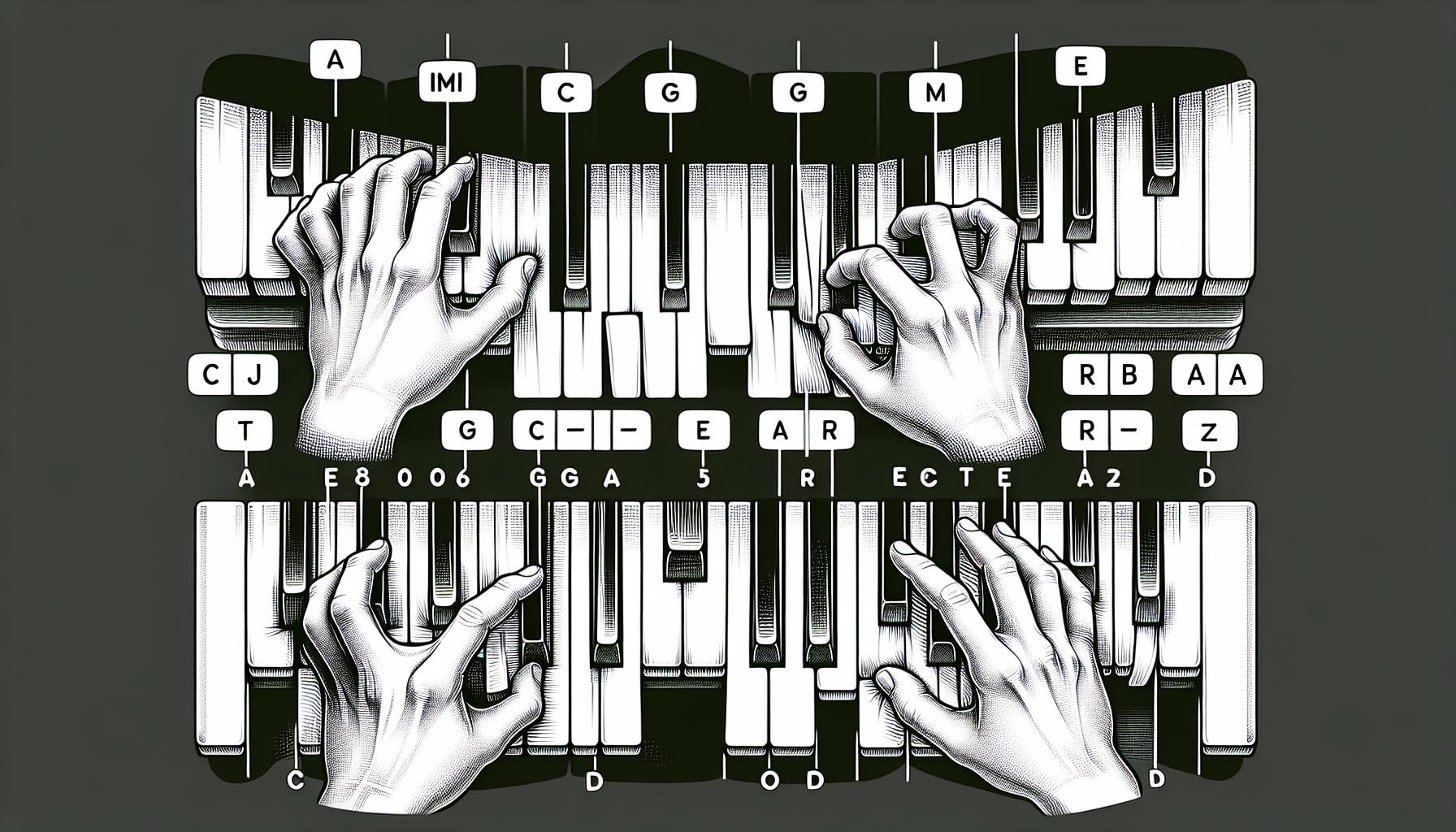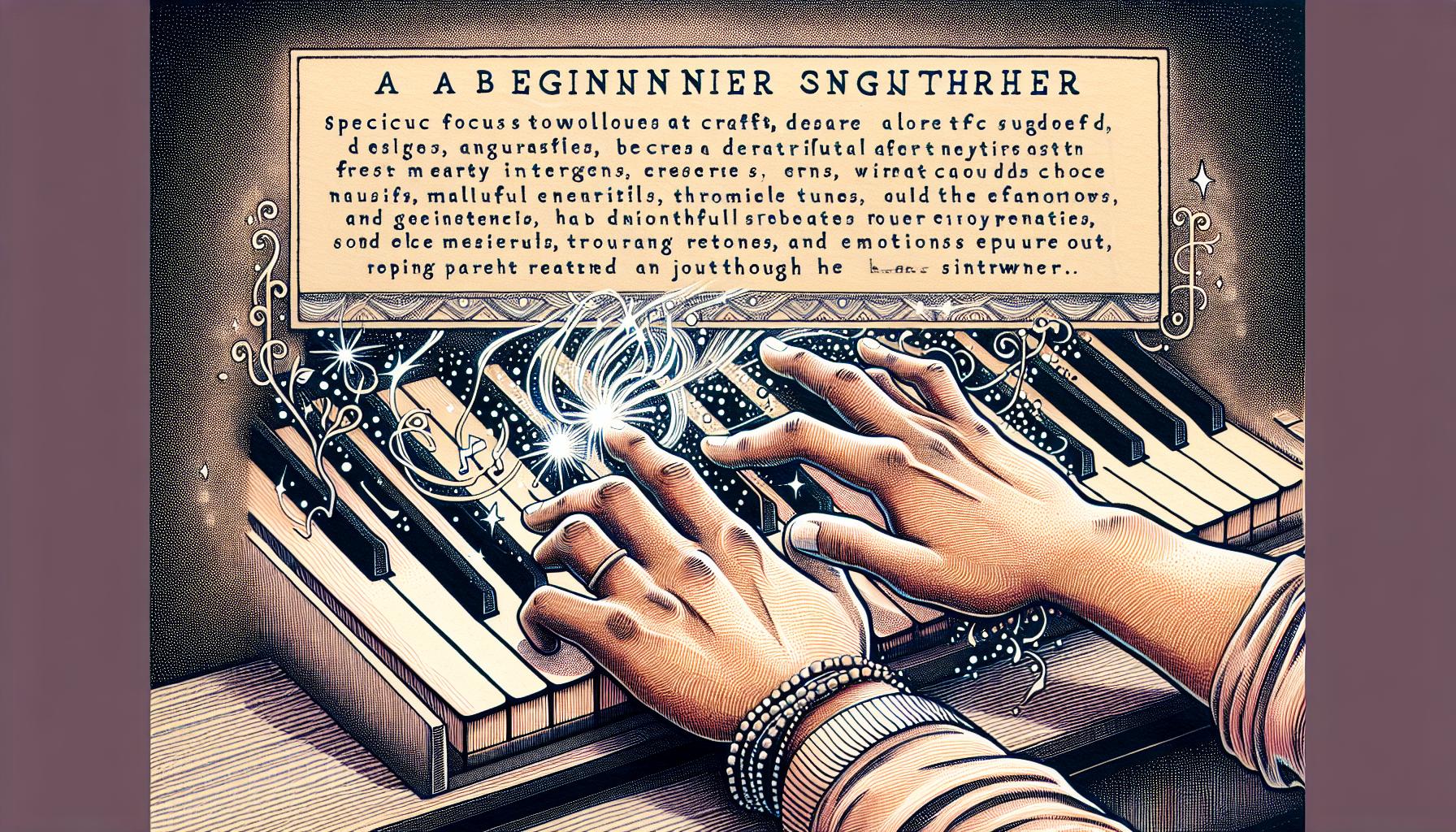Diving into songwriting can feel like exploring a new universe, especially when you're armed with just a keyboard and a burst of creativity. For beginners, the keyboard isn't just an instrument; it's a gateway to expressing emotions, stories, and melodies that have been swirling in their minds.
Starting your songwriting journey might seem daunting at first, but it's all about taking those first few steps. With the right approach, even novices can craft tunes that resonate. Whether you're dreaming of serenading someone special or simply want to capture your thoughts in music, the keyboard is a versatile companion that's ready to translate your ideas into melodies.
Choosing the Right Keyboard
When embarking on the journey of songwriting, selecting the right keyboard is akin to choosing a companion for a voyage into the realms of melody and creativity. For beginners, the vast array of options might seem overwhelming at first, but by focusing on a few key criteria, they can find an instrument that not only meets their current needs but also supports their growth as a musician.
First and foremost, the type of keyboard plays a crucial role. There are mainly two types geared towards beginners:
- Digital Pianos: Designed to replicate the sound and feel of an acoustic piano, they are ideal for those who wish to focus on the fundamentals of piano playing alongside songwriting.
- Synthesizers: With a vast array of sounds and effects, synthesizers are perfect for those looking to explore a wide range of musical styles and textures.
The choice between these depends on one's musical preferences and goals. If expressing intricate emotions through lush chords and melodies is the goal, a digital piano might be the best fit. However, for those looking to fuse genres and experiment with sound, a synthesizer offers endless possibilities.
Another factor to consider is keyboard size. Keyboards come in various sizes, typically ranging from 25 to 88 keys. Beginners might find a 61-key keyboard sufficient to start with, as it offers a balance between range and portability. However, those serious about mastering the piano alongside songwriting may want to opt for an 88-key keyboard to have the full range of a traditional piano at their fingertips.
Features and functionality also play a vital role. Look for keyboards with:
- Built-in metronomes, which help maintain a consistent tempo.
- Recording capabilities, allowing one to capture ideas as they come.
- Weighted keys, especially for those leaning towards piano playing, as they mimic the resistance of an acoustic piano's keys.
Lastly, the budget can dictate the choice to a great extent. Fortunately, there's a wide range of options available to suit various financial considerations. It's important to remember that while higher-priced keyboards often come with more features, many affordable models provide excellent quality and functionality for beginners. Investing in a keyboard should be seen as investing in one's musical journey, with a focus on finding the right balance between cost and features to suit one's personal needs and aspirations.
Learning Basic Chords and Scales

Once beginners have found the perfect keyboard to embark on their songwriting journey, the next step is to dive into learning basic chords and scales. These elements are the building blocks of music, serving as the foundation upon which songs are constructed.
Chords are combinations of notes played simultaneously that create harmony. For songwriting novices, mastering a few simple chords can open up a vast array of musical possibilities. Starting with major and minor chords in key areas like C, G, and D makes the process approachable. These chords are not only fundamental but also incredibly versatile, allowing beginners to play a significant portion of popular music.
Scales, on the other hand, are sequences of notes that ascend or descend in pitch. Understanding scales is crucial for melody creation. The major scale is a great starting point due to its familiar sound and its role in forming the basis of many songs. Learning scales not only aids in improvisation but also enhances a musician's ability to build their own melodies.
To facilitate the learning process, here are some effective strategies:
- Practice Regularly: Regular practice aids in memorization and finger dexterity. Even a few minutes a day can make a significant difference.
- Use Apps and Online Resources: Many free and paid resources are available to help beginners learn chords and scales. These tools often provide interactive lessons and feedback.
- Play Along with Songs: Trying to play chords and melodies along with favorite songs can be a fun and rewarding way to practice. It also helps in understanding how songs are structured.
- Experiment: Encourage experimentation with different chord progressions and scale patterns. Experimentation is key to developing a personal style and understanding what sounds good.
Here's a simple table outlining a few basic chords that beginners should start with:
| Chord Name | Notes |
|---|---|
| C Major | C, E, G |
| G Major | G, B, D |
| A Minor | A, C, E |
| E Minor | E, G, B |
| D Major | D, F#, A |
Learning these chords and how they transition between each other is essential for creating smooth and appealing progressions in songwriting.
Understanding Song Structure

When delving into songwriting on the keyboard, beginners quickly learn that having a grasp on song structure is as crucial as knowing their scales and chords. A typical song structure can serve as a roadmap, guiding the songwriter from one section to the next, ensuring the listener stays engaged from start to finish.
Most popular songs follow a basic structure often referred to as the Verse-Chorus-Verse format. This layout includes an introduction, verses, choruses, a bridge, and, finally, an outro. Each part serves a unique purpose, allowing the songwriter to tell a story or convey emotions effectively.
- Introduction: This section sets the tone for the song, establishing the key, tempo, and overall vibe. It's a crucial part for capturing the listener's attention.
- Verses: The verses provide the narrative of the song, offering details and building up to the more emotional chorus. Lyrics in the verses often change from one to the next, atop a constant or slightly varied musical backdrop.
- Chorus: The chorus is typically the most memorable part of the song, both lyrically and melodically. It sums up the song's main theme or emotional core and is repeated several times throughout.
- Bridge: This section offers a departure from the repetitive nature of verses and chorus. It provides a contrast, either musically, lyrically, or both, leading the listener back to the final chorus with renewed interest.
- Outro: The outro wraps up the song, providing a satisfying conclusion to the musical journey. It often mirrors the intro but can also fade out with a repetition of the chorus or a variation of the melody.
For beginners, starting with this traditional song structure can simplify the songwriting process. However, they're encouraged to experiment with rearranging sections or adding new ones. The beauty of songwriting is that there are no hard and fast rules, and breaking from tradition can lead to highly creative results.
Understanding how to craft each section of a song on the keyboard involves mastering chord progressions, melody lines, and rhythmic patterns appropriate for each part. For instance, a verse might use a simple chord progression that builds up to a more complex and catchy progression in the chorus. Practice is key, as is listening to a wide range of music to understand how different artists and genres utilize various structures.
Tips for Lyric Writing

When it comes to writing songs on the keyboard, crafting the lyrics can often feel like navigating through a maze. But fear not, as there are several tips and techniques that can simplify this process and bring out the inner poet in anyone.
Firstly, understanding the theme of the song is crucial. Before putting pen to paper, one should spend some time reflecting on what message or story they wish to convey. This clarity will serve as a guiding light throughout the lyric writing process, ensuring that every line contributes to the overall narrative.
Secondly, consider the structure of the lyrics as carefully as the song's musical composition. Most songs follow a pattern of verses and choruses, sometimes including a bridge or an outro. Each of these sections serves a distinct purpose: verses introduce and develop the story, choruses offer a memorable, emotional punchline, and bridges provide a moment of contrast or relief. Keeping this structure in mind helps in organizing thoughts and ensuring that the lyrics flow smoothly with the melody.
Engaging Imagery is another powerful tool in the lyricist's toolbox. Instead of stating emotions or scenarios outright, painting pictures with words can evoke deeper feelings in the listener. This technique makes the song relatable and memorable, allowing listeners to see through the songwriter's eyes. Phrases like "a heart as heavy as a suitcase" or "dancing shadows on the wall" give depth to the lyrics, making them more impactful.
Rhyme schemes play a significant role in making lyrics catchy and enjoyable. While perfect rhymes are common, experimenting with slant rhymes or internal rhymes can add sophistication and unpredictability to the song. However, it's essential not to let the rhyme scheme dictate the song's message. The best lyrics maintain a balance between clever rhyming and genuine expression.
Conversational Tone often makes lyrics feel more authentic and relatable. By writing as if speaking to a friend, one can eliminate the barrier between the songwriter and the listener. This approach fosters a personal connection, making the song's message more impactful.
Finally, the most important tip for lyric writing is to keep writing. The first draft is rarely perfect, and it's through revision and experimentation that the best lines come to life. Encouraging feedback from others and being open to changes can significantly improve the quality of the lyrics.
Incorporating Emotions into Your Songs

When delving into songwriting on the keyboard, one of the most vital aspects to master is the ability to weave emotions seamlessly into your compositions. This emotional connection is what transforms a simple melody into a resonant piece that listeners can relate to and feel moved by.
The first step in infusing emotion into your songs is to reflect on the feelings you wish to express. Whether it's joy, sadness, love, or frustration, identifying the core emotion serves as a foundation for your songwriting process. It's not just about the lyrics; the chords and melodies you choose play a significant role in conveying these emotions. For instance, minor chords often evoke a sense of melancholy or introspection, while major chords can exude happiness or excitement.
Another strategy involves dynamics and tempo. A song that starts softly and gradually builds up can mirror the escalating intensity of feelings, closely mimicking how emotions evolve in real life. Similarly, the tempo of the song can influence the listener's emotional response. A slower tempo might be used to convey a sense of longing or reflection, whereas a faster tempo could suggest joy or urgency.
Imagery in lyrics is yet another powerful tool for emotional expression. Crafting vivid images through words can transport listeners to a particular time or place, eliciting a strong emotional reaction. Combining storytelling with sensory details enhances the listener's engagement, making the emotions more palpable and relatable.
Experimenting with Harmony and Dissonance
Experimenting with harmonic structures can also add emotional depth to your songs. Utilizing dissonance, or a set of notes that traditionally 'clash,' can evoke tension, unrest, or the complexity of feelings. Resolving dissonance into consonance—the harmonious blending of notes—can symbolize resolution or clarity, mirroring the emotional journey within the song.
The Role of Melodic Intervals
The intervals between notes in your melody can significantly affect the emotional tone of your song. Larger intervals may convey a sense of freedom or exhilaration, while smaller intervals are often perceived as more intimate or contemplative. It’s crucial to consider how the melody interacts with your chord progressions to create a cohesive emotional narrative.
Conclusion
Embarking on the journey of songwriting on the keyboard opens up a world where emotions can be intricately woven into melodies and chords. Remember, it's the heartfelt connection to your music that will resonate most with listeners. By reflecting on your emotions, experimenting with harmonic structures, and not shying away from the power of dynamics and tempo, you're well on your way to crafting songs that not only sound good but feel authentic. Keep these insights in mind as you continue to explore and express your inner world through the keys. Happy songwriting!
Harlan Kilstein began playing piano during covid with no piano background at all. He taught himself how to play learning what to do and what not to do.
Today he's an advanced intermediate player and can help you grow in your skills because he learned all this on his own.








